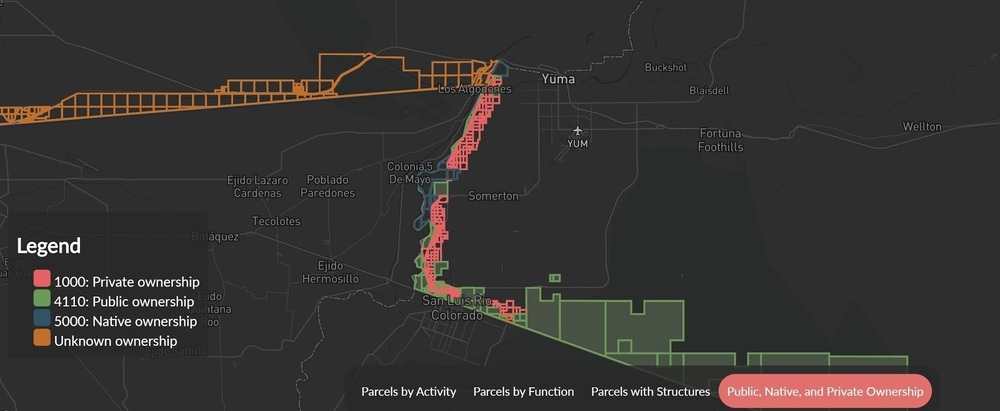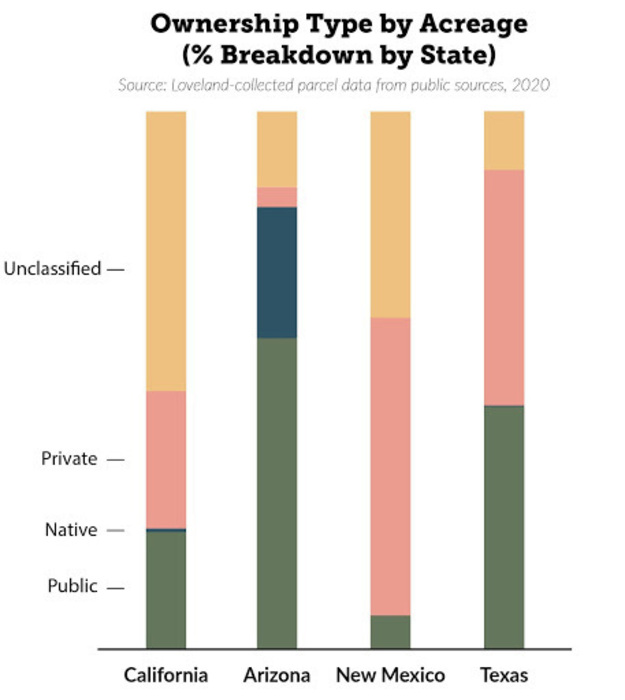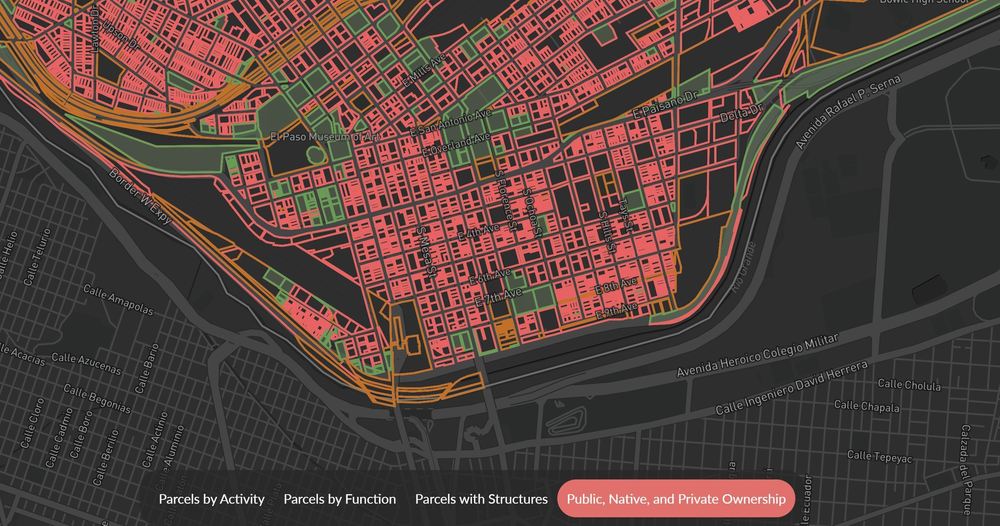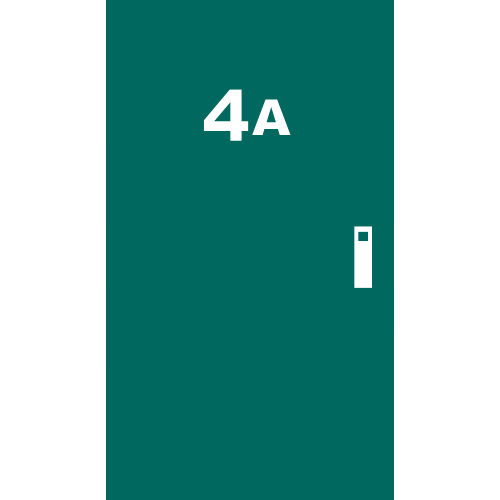Dec 2020 - US-Mexico Border Map Project
By Sahana Murthy on December 10, 2020 · Announcements
And just like that, we are in December! So much has happened this year, one email won’t be sufficient to summarize all of that.
To help with the summary, we are putting together an end of the year report on our parcel data, which we will share just before the holidays.
That said, this December update is super special, because it is purely focused on a special project that the Loveland team worked on and put together recently to wrap up the year.
US-Mexico Border Map Project
Our team here at Loveland has been curious to take a deeper look at land along the US-Mexico border for a while, and this month we decided to make public an interactive map with an accompanying report!
The US-Mexico border is the subject of, shall we say, “vigorous debate” politically - but although much ink has been spilled, our team felt like there has been little said about the current state of the land which lies along its 2,000 miles. This is our attempt to look at the facts on the ground, by applying our parcel data to the task.


The US/Mexico border spans about 2,000 miles, four states and an incredibly diverse array of biomes ranging from major urban areas to swaths of desert. In recent years, the border (and immigration more broadly) has become a political flashpoint.
Here at Loveland, we realized that our nationwide parcel data was perfect to answer some basic questions that we hadn't heard much about in the media coverage.
Specifically:
1) Who actually owns border parcels where the wall is being proposed?
2) What does current land use look like along the border?
Our team dug deeper into the data and the above questions through this project.
Read the entire report here -

Along with improving the overall coverage, recency and quality of our parcel data, this year our data team has been working tirelessly in creating nationwide standardized land-use codes using the “Land Based Classification System” LBCS guidelines by APA.
These same codes were applied to the land parcels along the border for a deeper analysis into the significance & ownership of these properties.
This is just one example of the kind of analyses that one can do with data as fundamental as parcel information, coupled with USPS vacancy & nationwide land-use code classification.

If this data is of interest to you or if you’d like to build cool interactive maps like the one shown above, please reach out to us at team@landgrid.com
Also, please don't hesitate to email us if you have any questions/feedback on the border map project.
That’s the December update for you.
Watch out for our EOY Parcel Data Report - key improvements & enhancements made to our data through the course of this year!
Until next time, have a wonderful rest of your December. As always, feel free to reach back to us at team@landgrid.com!
Happy Mapping!
Team Loveland


